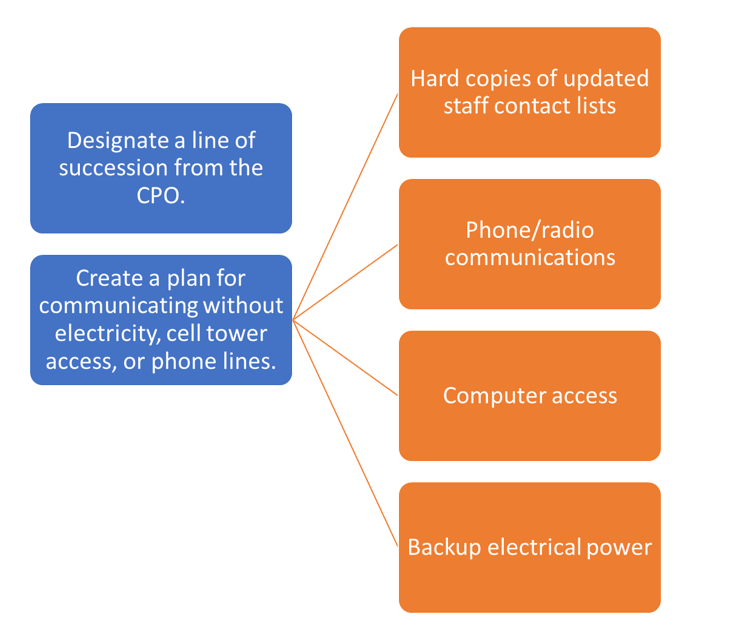
Preparing for Simultaneous Emergencies
August 25, 2020
If the COVID-19 pandemic has had a silver lining, it has been the forced shift to working from home and decentralizing the office building. While this transition to working from home has not been without growing pains, the benefits outweigh the costs in terms of preparing for emergencies on the horizon. Now that we know we can work efficiently from home; it is time to explore options to make our offices even more resilient in the face of future emergencies.
Emergency Contingency Planning for the Procurement Office

When an Emergency Operation Plan (EOP) has been activated, it is critical to identify the first emergency responder teams who will respond to EOP activation. Alternate emergency responders should be identified as backup.
How will workers be contacted during off-duty hours? Do you have a current contact list of all central procurement employees, not just those identified as emergency responders?
- Consider developing a separately hosted back-up for posting emergency instructions to staff if conventional phone numbers and websites might be down.
- Develop a hardcopy “phone tree” to distribute to employees. Update this often.
- Enroll in the FCC’s Telecommunications Service Priority program
- Prepare staff in advance to use manual processes in the event all communication power is lost.
Procurement Office EP Training
Just like your office participates in professional development training and procurement education, training for an emergency is critical. Procurement staff might not be in the on-site Emergency Response Team, but they will need to contribute to logistics, resources, or financial units.
Continuity of State Operations might require that an alternate purchasing function at or near the Emergency Operations Center. The CPO may need to stay at the EOC.
Setting aside time, at least annually, to prepare for an emergency will pay dividends in the event of an emergency. Preparing staff will allow them to feel prepared and confident with their response, information, and communication strategies. NASPO’s Emergency Preparedness Guide contains further information surrounding Emergency Exercises for the procurement office.
Procurement Response Kits: First Aid for Procurement
In a perfect emergency, procurement policies, documents, and contact lists would already be at the Emergency Operations Center. However, emergencies are never perfect. A good strategy is to develop a Procurement Response Kit for Continuity of State Operations. These kits should be stored off site, potentially in several sites, and available as a hard copy in the event of a power outage. Here’s what a Procurement Response Kit should have in it:

Supports for states exist through the federal government for emergency planning, take advantage of these resources. The Stafford Act provides for FEMA’s Hazard Mitigation Grant Program which exists to support states in reducing the impact of disasters through long-term solutions. The lessons learned from the COVID-19 pandemic have been hard. Put what you’ve learned to use, to prevent future procurement disruptions.
